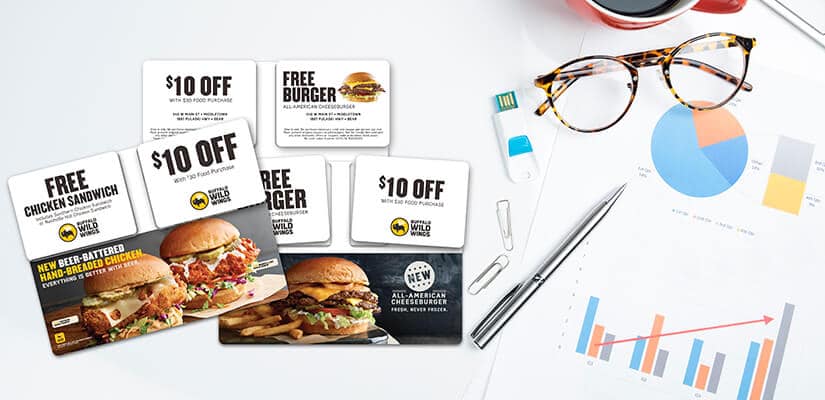A postcard is worth more than what it costs. You need to consider the opportunity value and how much money it can bring in for your restaurant.
In our previous post on why direct mail is better for restaurants (than digital), we discussed how direct mail returns better response rates than Google Ads and social media. It even costs less and has a lower cost-per-acquisition.
But a marketing campaign that costs less and has a lower cost-per-acquisition doesn’t necessarily mean it’s worth more or is more valuable.
To find that out, we need to also figure out other variables such as:
- The cost of the type of postcard and targeting we’re using
- The expected response rate of our postcard
- How much your offer will cost you
- Average ticket prices
- The lifetime value of your customer
We know it’s a lot, so let’s get straight into it.
The most important metric to use is the response rate for other successful postcard marketing campaigns.
In order to know how valuable a postcard can be, we need to know how many people will interact with our direct mail pieces.
In our last article, we had established that the average response rate for one of our postcard marketing campaigns comes in around 10%.
%
Response Rate
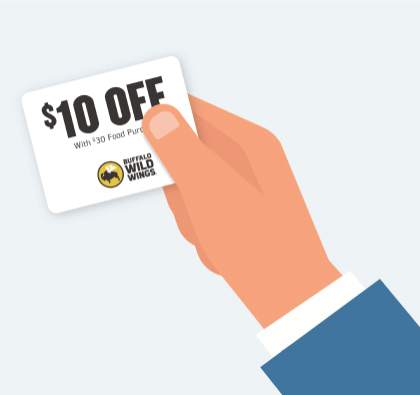
That depends on the type of offer, material, targeting, and postcard features you decide to use. Fortunately, we can help you with all of that.
It’s also important to know how much the postcard is going to cost. By itself, the cost of a postcard isn’t going to determine your return on investment or value of the campaign though.
A higher cost postcard could (and typically does) produce a higher return on investment if done correctly with a thought-out strategy.
Of course, the type of postcard you use needs to be determined by your goals. If your goal is to invite a guest to a grand opening or re-opening, you may want to go with a standard, non-perforated piece.
If you want to have offers like coupon offers or cutouts, it would probably be better to go with a perforated piece. Maybe a thick, gloss piece that really stands out and the perforations fit nicely in a wallet.
Consider how the type of postcard will impact what kind of response you get.
For instance:
APPLEBEE’S
Applebees wanted to promote a strong offer to bring people in and spend money. The offer was simple, “$10 off an order of $30 or more”.
We needed a card that felt as important as the offer, so we went with a thick, laminated piece with a perforated pop-out. If we would have gone with a standard, matte, cardstock postcard, the cost may have been less up front, but the return wouldn’t have been as high.
Type of Postcard: Laminated Pop-out
Offer Used: $10 off an order for $30
Method of Targeting: Everyone in a 3 mile radius
Response Rate: Over 15%!
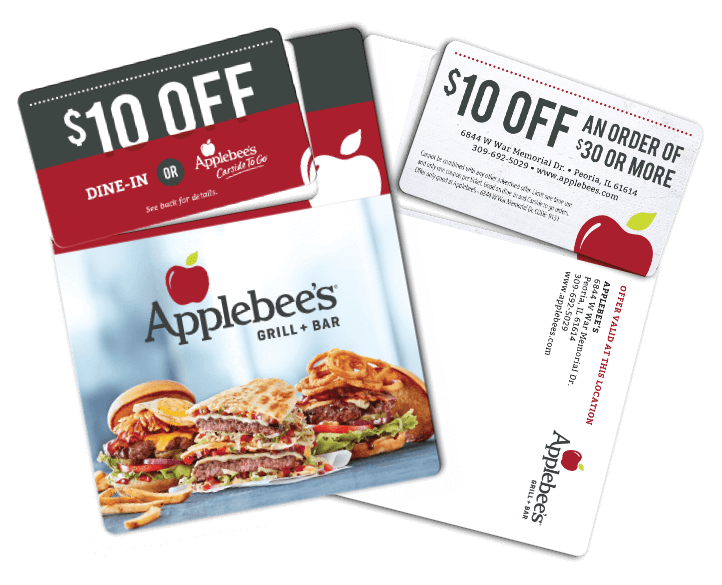
The complete cost of your postcard campaign includes more than the physical costs to place the ad, order the pieces, or ship them. You also have to take into account the cost of your offer.
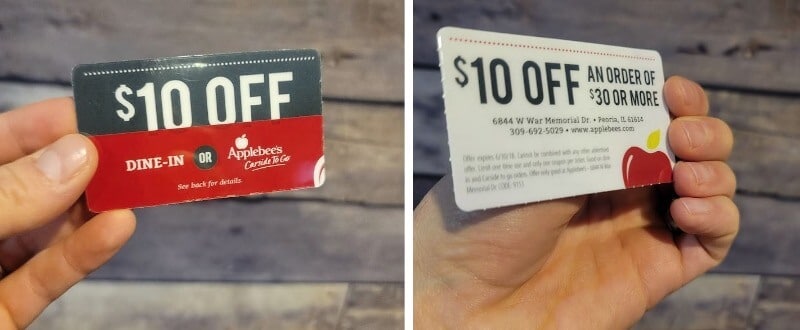
If one of your offers is $10 off a ticket of $30 or more, you’ll have to factor that into the cost of the campaign.
Higher offers will have higher redemption rates and in-turn have higher costs to your campaign.
If you have multiple offers, they should all be considered.
Now we’re ready to calculate the potential return on investment on a postcard campaign.
First, let’s assume that during an average month (no holidays or events), we had 100 tickets (200 – 300 patrons). This is with our standard marketing (or none at all) with an average ticket price of $40.00.
That means our total, normal revenue for that month is about $120,000 (100 tickets x $40/ticket x 30 days).
Tickets Paid
100 tickets
Average Ticket
$40.00
Days in Month
30 Days
Total Month's Sales
100 x $40.00 x 30 = $120,000.00
The cost of a typical meal is about 30% of the menu price (A $10 meal costs the restaurant $3.00 for a $7.00 profit).
Assuming that we expect another average month, we decide to add a 10,000 piece mailer promoting the same offer as Applebee’s: $10 off an order of $30 or more.
Right now, our gross profit on an average month is around $84,000.
Menu Item Profitability
70%
Monthly Revenue
$120,000.00
Monthly Gross Profit
$120,000.00 x 70% = $84,000.00
If we’re Applebee’s, we know that our types of customers are very broad. So with that, we’ll keep it simple by just going after every mailbox within a 3 mile radius.
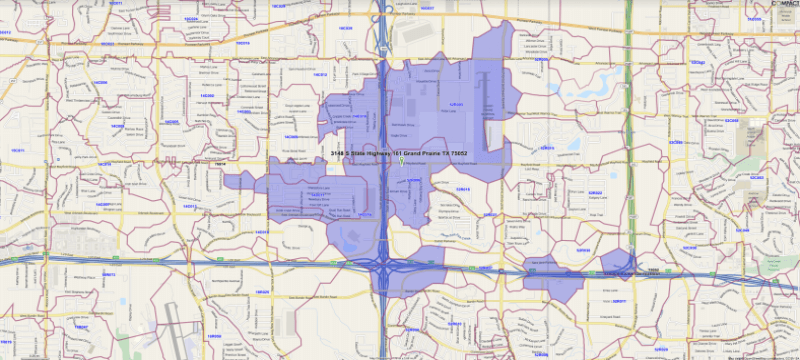
If we wanted to be more narrow with targeting and only target people:
- With birthdays
- A specific income level
- With children
- A certain age
We certainly could. But in this example, it isn’t necessary.

For a 3-mile saturation targeting, we’re looking at about $0.19 per piece at 10,000 pieces.
Now that we know who we’re targeting, we need to know what we should offer them to order from our restaurant. We need to know what our specific goals are.
In this instance, our goal is not to get the word out on a new menu item to see if it’s worth keeping. If that were the case, we might just make an enticing offer for a certain dollar amount off of that item.
No, our goal here is purely return on investment — the most bang for our buck.
We’re going to go with an aggressive offer.
$10.00 off an order of $30.00, like we mentioned previously.
The look, feel, and functionality of your postcard is going to determine what your customer does with it after they open their mailbox.
The way your piece looks and functions is similar to the subject line of a sales email.
It better be good. It better stand out.
That’s why we’re not going with the run-of-the-mill flimsy postcard.
We’re going to use a shiny gloss postcard with credit card thickness. We’re also going to use perforations for the offer option we listed above. Similar to this card:
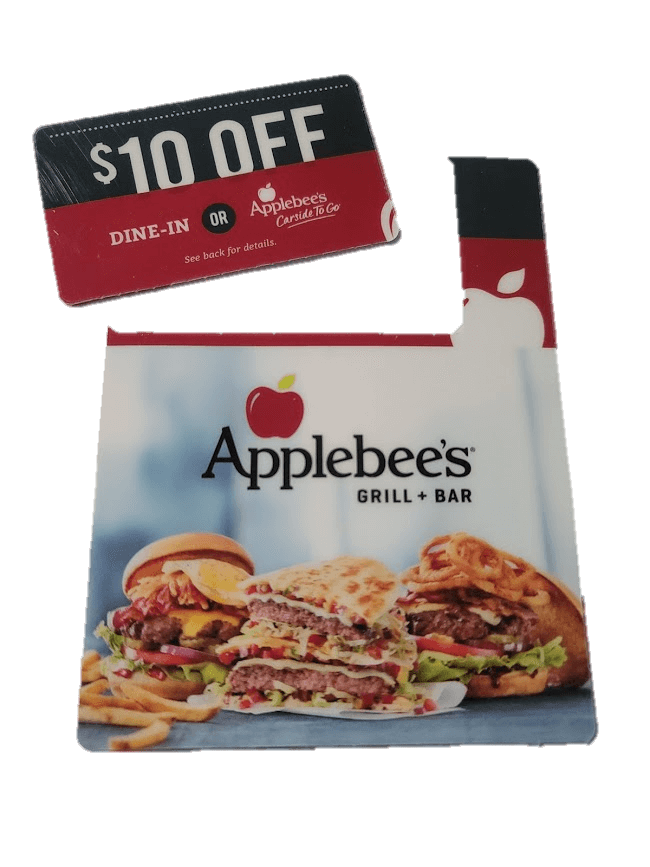
Not only is this going to stand out, but the customer will be able to pull the offers off and slip them in their wallet as if they belong there.
Now that’s value!
This type of postcard is going to cost us $0.30 per piece. Add to that the $0.19 per piece for postage and our postcard cost is up to $0.49 per piece.
That comes out to $4,900.00 for a 10,000 piece campaign with laminated pop-out postcards.
Postage
$0.19 / piece x 10,000 pieces = $1,900.00
Print Cost
$0.30 / piece x 10,000 pieces = $3,000.00
Cost per Piece
$1,900.00 + $3,000.00 = $4,900.00
Based on our average response rates for these types of campaigns, we’re looking at about 10%, conservatively. So we’ll use that.
If we got a 10% response from our 10,000 piece campaign, that means we successfully redeemed 1,000 postcard offers.
Keep in mind what our average number of customers was on a typical month. If we had 100 tickets on a given day over a 30 day period, normally, this postcard campaign brought us in an additional 1,000 for a total of $4,900 (or an additional 33 tickets per day).
That’s a 33% increase in tickets due to one postcard campaign.
It’s easy to say it brought in more customers, but did we really get a return on our investment?
With 1,000 redemptions, assuming all customers used their $10 off $30 offer, that means our offer cost us $10,000 for the additional 1,000 patrons we received.
The breakdown for our postcard campaign is as follows:
Postage: $0.19 / piece
Print and Artwork: $0.30 / piece
Direct Cost of Postcard Campaign = $4,900.00
Cost of Postcard Campaign and Cost of Offer Based on 10% Response Rate = $14,900
Total Cost of Postcards
$4,900.00
Cost of Offer
$10 per offer x 1,000 redemptions = $10,000.00
Total Campaign Cost
4,900.00 + 10,000.00 = $14,900.00
So what does that equate to in how much money we just made the restaurant?
Well, we’ll go back to our original numbers.
Before
We had 100 tickets in a 30 day period that averaged $40 per ticket for a total monthly revenue of $120,000.
- + 100 tickets per day
- x 30 days
- x $40 per ticket
100 x 30 x 40 = $120,000 revenue
- – 30% cost of meals
120,000 x 0.7 = $84,000 gross profit
Revenue Generated
$120,000.00
Margin per Menu Item
70%
Gross Profit
$120,000.00 revenue x 70% ticket margin = $84,000.00
After
Now we have 100 tickets per day for a total of 3,000 tickets in a 30 day period with an average ticket price of the same $40. But this time, we had a $4,900 postcard campaign and invested $10 per ticket for our offer. We received an additional 1,000 tickets, making our ticket total 4,000 in 30 days.
- 100 regular tickets per day
- x 30 days
- + 1,000 new tickets in one month
- x $40 per ticket (before offer)
(100 x 30 + 1,000) x 40 = $160,000 revenue
Cost of Campaign
$4,900.00 for 10,000 pieces
Cost of Offer
$10 Offer x 1,000 redemptions = $10,000
Tickets per Month
4,000 tickets x $40 per ticket = $160,000.00
Revenue Generated
$160,000.00
We both know that revenue generated doesn’t mean anything until we take our costs out. So we’ll do that now using the same numbers we used at the beginning of this post as well as the extra our postcard campaign cost us.
- 30% cost of meals
- $4,900 postcard campaign
- $10,000 worth of offers
(160,000 x 0.7) – 4,900 – 10,000 = $97,100 gross profit
Revenue Generated
$160,000.00
Margin per Menu Item
70%
Cost of Postcard Campaign
$4,900.00 campaign + $10,000.00 offers = $14,900.00
Gross Profit
($160,000.00 Revenue x 70% ticket margin) – $14,900.00 = $97,100.00
Results
By running a targeted, effective postcard campaign, using very conservative numbers based on our own data, we were able to pull in a gross profit of $13,100.
We spent $14,900 with our offer included and earned $28,000 of profit!
Before Profit
$84,000.00
After Profit
$97,100.00
Profit Increase
$97,100.00 – $84,000.00 = +$13,400.00
%
Postcard Campaign ROI
This is a concept that’s often neglected. However, a new customer who had a positive experience means you’ll retain that customer in the future, as well as anyone that customer invites out to eat to your restaurant.
A successful postcard campaign is not only a direct investment. It’s also an indirect investment.
Ready to see how an effective direct mail campaign using postcards will grow your monthly restaurant revenue?
Fill out the form on our contact page to get started today!

